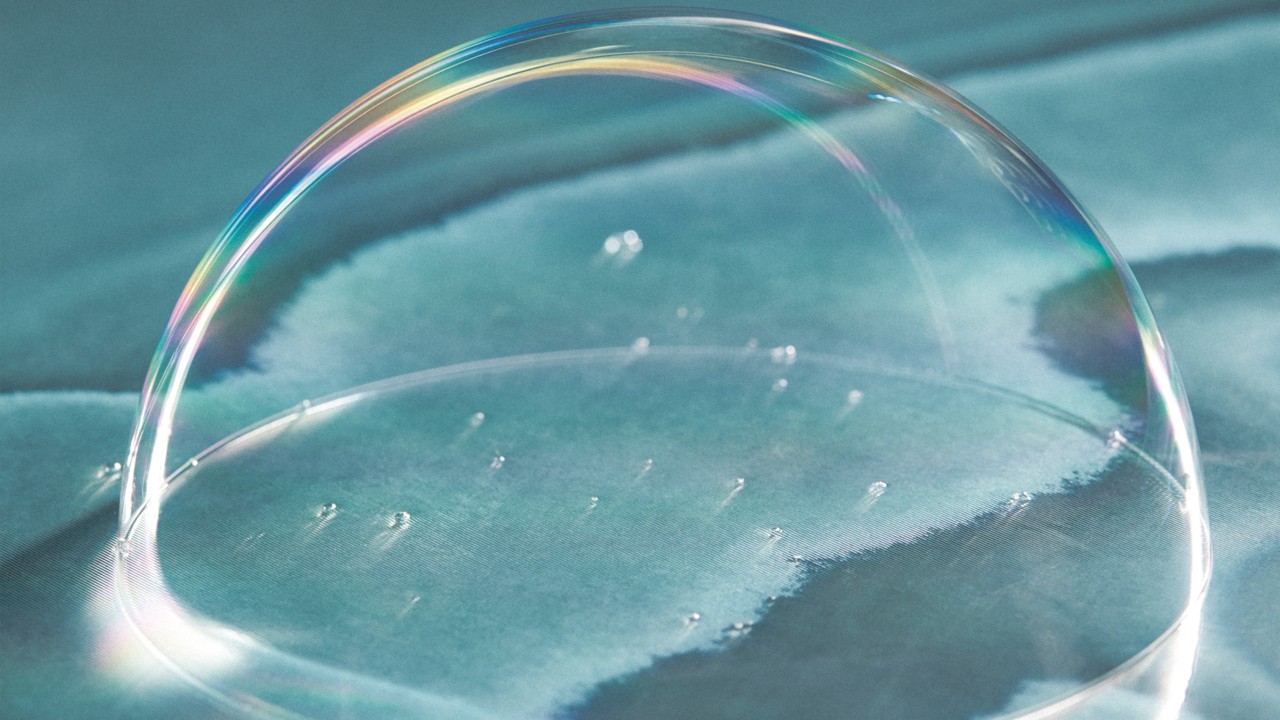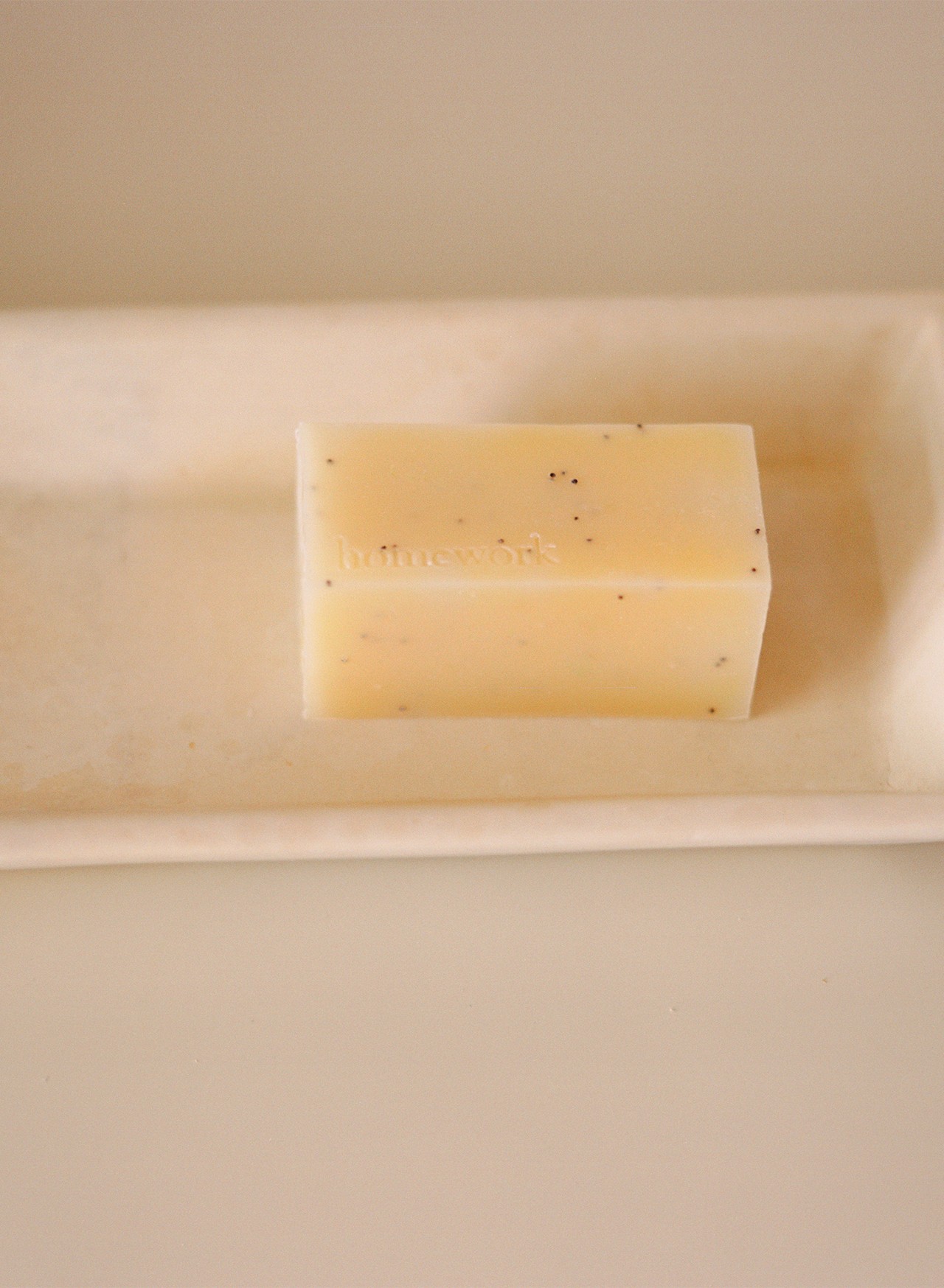

Photograph by Alecio Ferrari / Connected Archives
This story is part of our 101 series, a collection of articles that unpacks the most pressing issues facing our planet today—and what you can do about them. Discover more from the series here.
Considering its prominence across drug stores’ aisles, high-end department stores, and social media feeds, the term “clean beauty” has managed to make a lot of noise with very little consensus on what it actually means.
There is no formal definition for clean beauty, though it generally denotes an absence of certain harmful chemicals from product ingredient lists.
The European Union has banned and heavily restricted more than 2,000 ingredients in total within the cosmetics category, whereas the United States restricts 11. U.S. retailer Credo Beauty’s Dirty List™ names over 2,700 chemicals that the business prohibits or restricts in the products it stocks, notes beauty reporter and critic Jessica DeFino. By contrast, she adds, American makeup brand CoverGirl’s Clean Fresh Collection of vegan products is free from five ingredients: sulphates, formaldehyde, phthalates, parabens, and talc.
While “clean” is often what brands make it, the demand comes from a valid place: consumers are increasingly cautious about the things we put in, and on, our bodies. Over the years, reports of carcinogens and other contaminants found in beauty products revved up collective anxiety, while the likes of Gwyneth Paltrow and her controversial wellness brand Goop helped catapult the wellness-beauty axis into popular culture.
So, it’s no surprise people are worried. A 2024 survey of 1,000 Americans conducted by The Mesothelioma Center revealed that 45% of people are concerned about the dangers of unregulated cosmetics, while 46% of frequent makeup-wearers review cosmetic ingredients before making a purchase.
As brands cash in on the clean beauty opportunity, it’s easy to succumb to fear mongering and greenwashing. Below, we unpack some key questions to explain clean beauty’s environmental and social impact, and how shoppers can prioritize ingredient safety without getting swept up in Big Beauty’s marketing maelstrom.
Not all so-called clean beauty products are necessarily clean when it comes to ingredient safety—brands might focus more on packaging and their carbon emissions, for example, and proclaim their products “responsible.”
A plethora of chemicals are widely labelled harmful in the context of personal care products. When considering what products to use, avoid those that are made with sulphates, formaldehyde, phthalates, parabens, talc, triclosan, toluene, diethanolamine, lead, artificial colours and fragrances, polyethylene glycols (PEGs), propellants like isobutane, coal tar dyes, butylated hydroxyanisole (BHA), and per- and polyfluoroalkyl substances (PFAS).
Experts don’t always agree on whether a chemical is toxic enough to preclude all personal care uses, nor what the threshold for toxic exposure entails. On the other hand, some ingredients are still commonly used because there isn’t enough evidence to prove links between doses and dangers like cancer—particularly in the U.S., where there’s a higher bar for toxic chemicals before they’re regulated.

While some beauty businesses do commit to concrete sustainability efforts, clean beauty marketing often buys brands a halo effect that implies a commitment to environmental protection. This doesn’t mean considerations like product waste, packaging, overproduction, carbon emissions and pollution are always adequately addressed.
“My biggest problem with the idea of clean beauty being better for the environment is that it actually created an entire new market full of purchasable products that it’s pushing on consumers,” says DeFino. “In terms of environmental safety, it would’ve been better to reform the issues in the existing industry, rather than creating an entire new market of consumerism.”
A Nielson report illustrates how clean beauty is driving growth for the industry at large: where the beauty and personal care industry saw sales grow 2% in 2021, clean beauty sales (a category that the company defines as being free from 600 ingredients) grew 8.1%.
While certain developments like the shift away from plastic microbeads do have positive environmental implications, the overall picture is still one of increased consumption. For instance, clean beauty products often expire faster as they don’t contain preservatives, contributing to the 4% of beauty product stock that is already disposed of due to perishing, spoiling or damage, according to British waste management company Business Waste.
Then, there’s the new sub-categories of “clean” beauty that brand themselves as eco-friendly alternatives, but could wind up doing more harm than good. It’s worth avoiding products like reusable eye-patches and biodegradable glitter—which despite potentially being less harmful for the planet, according to DeFino, ignites greater demand for eye-patches and glitter overall. A rising tide lifts all boats.
Though clean beauty is often conflated with cruelty-free, vegan, and all natural labels, buying a so-called clean beauty product doesn’t guarantee that it meets those standards.
Instead, look to the Leaping Bunny, a certification founded by a coalition of eight American animal protection groups that verifies whether a cosmetics or personal care product is cruelty-free. Keep in mind that there is no regulation over the term “cruelty free,” and a bunny logo refers to the finished product, not its entire supply chain.
“My biggest problem with the idea of clean beauty being better for the environment is that it actually created an entire new market full of purchasable products that it’s pushing on consumers.”
Almost all animal testing occurs at the ingredient level, according to the Leaping Bunny’s website, and companies that claim they don’t test on animals may simply contract a third party to do so. For peace of mind, buy from companies certified by the Leaping Bunny Program, which requires that no new animal testing be used in any phase of product development by the brand, its labs, or suppliers.
“The beauty industry is really built around fossil fuels—big oil and big beauty are completely in cahoots,” says DeFino, and yes, that includes clean beauty. “Tons of ‘clean’ products still use fossil fuels or fossil fuel derivatives, petrochemicals, at the ingredient level.”
Plastic is made of petrochemicals (byproducts of oil production), and popular beauty ingredients like mineral oil, petroleum jelly, paraffin wax, polyethylene glycol, isopropyl alcohol, and sodium lauryl sulphate are also petroleum-based, though some of them may be excluded by specific clean parameters.
Global production capacity for polyethylene glycol, a fossil-based moisturizer and emulsifier used to blend water and oil, stands at around 21 million tonnes, according to World Bio Market Insights. Meanwhile, between 10,000 to 100,000 tonnes of the preservative phenoxyethanol, which can be found in almost every makeup item from concealer to mascara, are imported or made in the EU each year.
Then there are ingredients made or extracted using petrochemical-powered processes, like seemingly all-natural essential oils. You won’t be told the oils in your bath or diffuser are made possible by fossil fuels, which power energy-intensive processes like steam and hydro distillation, but that could very well be the case. As citizens, the best we can do is stay educated and make informed decisions about the products we buy where possible.

Personal care products—from skin lighteners to fragranced menstrual and intimate care products—have put Black, Latina and other female minorities at risk of adverse health outcomes due, in part, to long-running oppressive stereotypes rooted in white supremacy.
Not only might beauty products marketed to women of colour contain more toxic ingredients than those sold to white women, Black women on average buy nine times more products per day than white women, according to the Environmental Defense Fund. Studies have also found higher levels of parabens and phthalates in women of color’s bodies—these chemicals are known as endocrine disruptors and can mimic, block, or interfere with the body’s hormones.
While some clean beauty brands work to eliminate these chemicals from their ingredient lists, clean beauty—like many mainstream beauty movements built upon patriarchal and white supremacist ideals—has largely operated through an exclusive lens, both in terms of price and representation (it doesn’t help that formulating clean products that show up on pigmented skin is often more expensive, and brands refuse to make the necessary investment).
There’s also the fact that African, Asian, Latin, and Indigenous cultures have been disproportionately affected by ingredient colonization, which spans the cultural appropriation of ingredients like marula oil, prickly pear, coconut oil, as well as the environmental implications of those capitalist acts. Keep in mind BIPOC communities are more likely to be affected by climate change and the environmental results of beauty overconsumption due to unjust systems of oppression. While the roots of these issues are systemic and extend far beyond the beauty industry, it doesn’t hurt to support BIPOC-owned responsible businesses as a shopper, and keep an eye out for ethically sourced ingredients.
Beauty is relatively under regulated compared to other consumer market categories, and progress is being made, albeit slowly.
In the EU, internal disagreements have postponed the European Commission’s long-awaited revision of the Cosmetics Products Regulation, announced in 2020, meaning the sector will be regulated with technical powers and softer guidance in the meantime. John Chave, director of Cosmetics Europe (CE), even compared the proposal to the Loch Ness Monster in a speech to CE delegates because of its elusiveness, in spite of being much spoken about.
In the U.S., where relevant regulations haven’t been updated for over 80 years, the Modernization of Cosmetics Regulation Act of 2022 (MoCRA), is expected to up consumer safety protection by expanding the FDA’s currently limited authority over the category. Under the act, for example, the FDA can issue mandatory product recalls and require brands to disclose common allergens to the body. This shift, however, is long overdue, and the update crucially contains no mention of sustainability or ingredient sourcing.
Beauty is relatively under regulated compared to other consumer market categories, and progress is being made, albeit slowly.
DeFino also notes a rise in legislative chatter relating to PFAS, synthetic chemicals that are not only environmental pollutants but linked to negative health effects. Crucially, PFAS use is not being recorded on many product labels.
The missing piece of the puzzle bridging consumer protection with sustainability is supply chain transparency. “The supply chains in the beauty industry are really murky, and a lot of brands don’t know where their ingredients are coming from every step of the way, from mining to formulation,” adds DeFino. “It can lead to a lot of contamination the brand might not be aware of.”
To prioritize safer ingredients, consider looking up products on apps like the Environmental Working Group’s Skin Deep, Think Dirty, Good Face, or INCI Beauty to help you find the best product according to their scores, and ingredients you’re looking to use or avoid. Consider businesses that offer recyclable, plastic-free or refillable packaging, and if possible, choose products that are easy to refill or repurchase so you can keep up the momentum in the long-run—you’re less likely, for example, to send an empty bottle abroad than to bring one to the organic shop in your neighborhood.
Use up your products to the last drop, and read up on what is and isn’t recyclable (foundation bottle pumps, for example, are not). Browse waste management and recycling programs available to you, such as Terracycle, or read up on the formulations your local disposal centre will accept and any scheduled drop-off dates to add to the diary.
Ultimately, the best key thing to do is buy less, and be aware when brands try to convince you that you need to buy more to be healthier or safer. Ditch the 15-step skincare routine and invest in safe products that do more with less—your skin, and the planet, will thank you.
101: How Clean is Clean Beauty?

